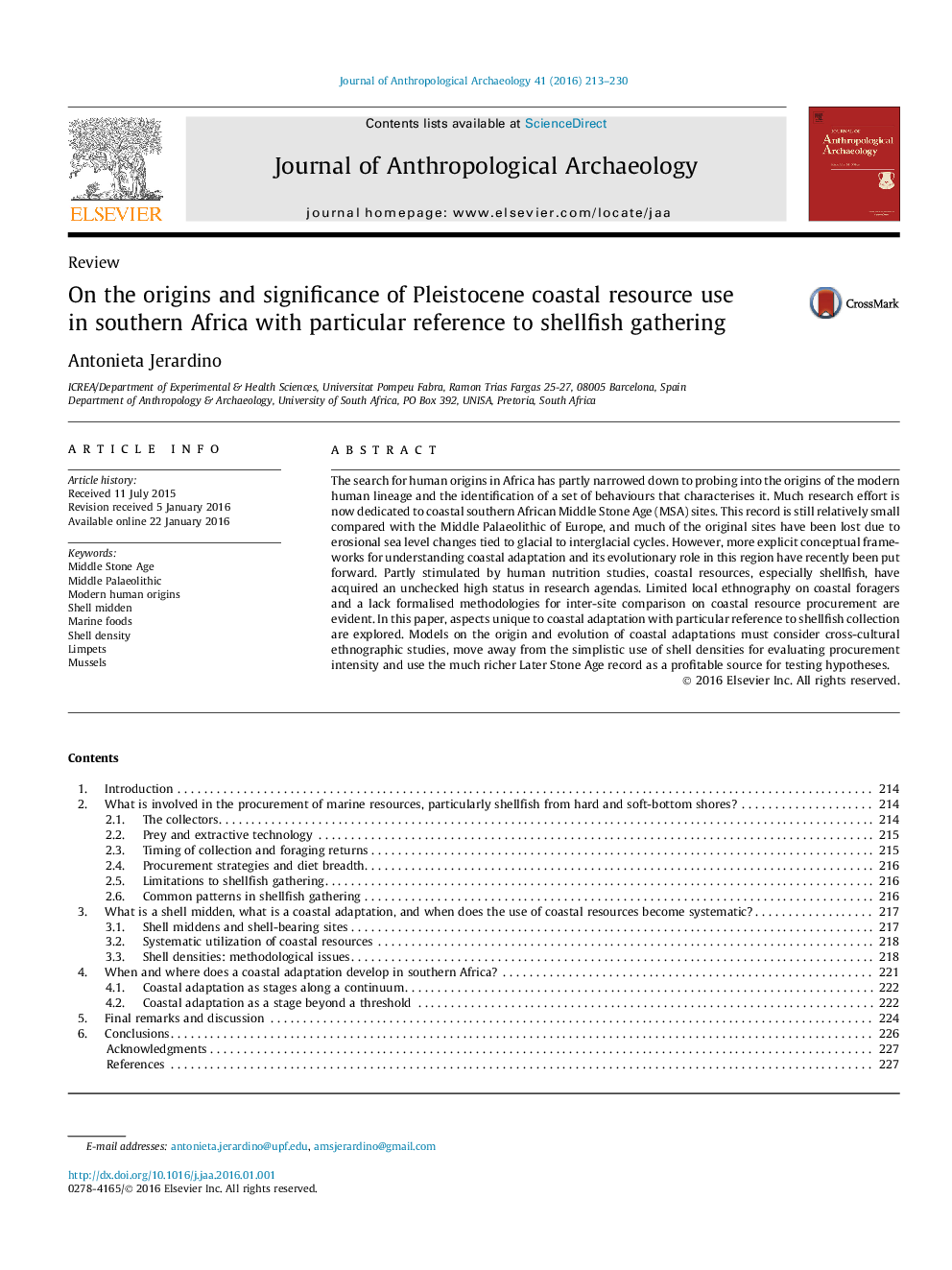| کد مقاله | کد نشریه | سال انتشار | مقاله انگلیسی | نسخه تمام متن |
|---|---|---|---|---|
| 1034882 | 1483849 | 2016 | 18 صفحه PDF | دانلود رایگان |
• South African origins and significance of Pleistocene coastal resources are debated.
• Shellfish collection is unique to this adaptation and is explored cross-culturally.
• Methodology to identify systematic use of coastal resources is critically assessed.
• Holocene coastal record is examined in detail as a source of hypothesis testing.
• Models and fieldwork must consider these for sound explanations on empirical basis.
The search for human origins in Africa has partly narrowed down to probing into the origins of the modern human lineage and the identification of a set of behaviours that characterises it. Much research effort is now dedicated to coastal southern African Middle Stone Age (MSA) sites. This record is still relatively small compared with the Middle Palaeolithic of Europe, and much of the original sites have been lost due to erosional sea level changes tied to glacial to interglacial cycles. However, more explicit conceptual frameworks for understanding coastal adaptation and its evolutionary role in this region have recently been put forward. Partly stimulated by human nutrition studies, coastal resources, especially shellfish, have acquired an unchecked high status in research agendas. Limited local ethnography on coastal foragers and a lack formalised methodologies for inter-site comparison on coastal resource procurement are evident. In this paper, aspects unique to coastal adaptation with particular reference to shellfish collection are explored. Models on the origin and evolution of coastal adaptations must consider cross-cultural ethnographic studies, move away from the simplistic use of shell densities for evaluating procurement intensity and use the much richer Later Stone Age record as a profitable source for testing hypotheses.
Journal: Journal of Anthropological Archaeology - Volume 41, March 2016, Pages 213–230
